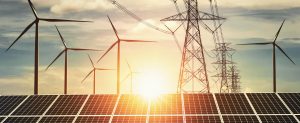The “American Jobs Plan” aims to supercharge electric vehicle adoption. The proposal allocates billions in funding specifically to accelerate electric vehicle adoption, and for good reason. Transportation currently accounts for nearly a third of U.S. greenhouse gas emissions, and with no tailpipe, electric vehicles offer staggering emission reductions.
Although EVs significantly reduce air and climate pollution, and help EV drivers save money on gas and maintenance, there is inequitable access to the EV market. New EVs have higher up-front costs than traditional vehicles, putting them out of reach for those in lower-income brackets. Access to charging infrastructure is another barrier, especially for those living in apartments that lack somewhere to plug in at home. On the cusp of an electric vehicle transformation, it is worth considering how to ensure that the economic, health, and social benefits of EVs are experienced broadly, and that electrified transit is an attainable option for all.
Sticker Price
Today new electric vehicles are more expensive than their gas fueled counterparts. But the price difference between an EV and a gas car is closing rapidly. In fact, electric and internal combustion vehicles are expected to reach price parity in 2024.
But not everyone wants or can afford a brand-new car. According to data from Edmunds, 70% of the vehicles sold in the US in 2019 were used. Clearly, if Americans are going to go electric, for most people it will be in a used EV. As the EV market grows, we continue to see more used EVs available for purchase. Some dealerships, like Clean Fuels Utah, have even begun to specialize in selling used EVs.
Electric vehicles are cheaper to drive
Once purchased, EVs are significantly cheaper to own and drive. The cost of owning and maintaining a car includes not just the purchase price, but registration, fuel, insurance, and maintenance. The average middle-income household spends almost 20 percent income on transportation. Low-income households spend even more, about 30 percent of total income, on transportation costs.
On the upside, the lower operating costs of EVs can help households keep more money in their pockets. Improvements in the fuel efficiency of gas cars have already saved low- to middle-income households up to an average of 2 percent of their income from 1980 to 2014. Charging an EV in Utah costs about half as much as buying fuel for a gas car, and EVs have fewer moving parts, therefore reduced maintenance needs.
Equitable distribution of electric vehicle charging infrastructure is critical
A robust network of electric vehicle charging stations is critical to ensure EV drivers have confidence that they can get where they need to go. Many EV drivers choose to install a Level II charger at home. Rocky Mountain Power currently offers a $200 incentive for residential customers to install a home charger. In addition to the charging equipment itself, many homeowners will have to install or upgrade electric wiring to accommodate the EV charger which can be costly. These costs are significantly less expensive when done upfront. EV-ready building practices for new construction can help homeowners avoid the retrofit costs and ensure that installing an EV charger is as simple as buying it and plugging it in.
Drivers in multi-family housing or urban areas who don’t have a designated parking spot may not be able to charge at home, but may still be comfortable driving an EV if workplace charging or public fast charging is easily accessible. Level III fast chargers can charge most cars in about 30 minutes, so charging your car can be combined with other planned trips like a stop at the grocery store.
It is especially important to expanding EV charging infrastructure in communities of color, where residents experience higher exposure to pollution of all types, including pollution from cars. Making EV charging convenient and accessible for everyone, across all communities, is critical to drive equitable access to EVs and their clean air benefits. One good example is a California utility agreement to install 200 fast chargers that included a commitment to ensure 20% of the stations are in low-income areas.
Don’t forget electrified public transit
Public transit reduces the need to own a car, and traveling via public transit is much more efficient than taking a trip in a personal vehicle. Cities can work to transition their vehicle fleets to electric options. The UTA already operates five fully electric buses in Salt Lake City and is working to replace 20 more diesel buses with electric alternatives. The Salt Lake City School district plans to invest in several electric school buses. The increasing availability of electric options for heavy-duty vehicles like buses, delivery vans, and even semis require additional investments in charging infrastructure, but also delivers fuel savings and pollution reduction benefits.
Bottom Line
A swift transition to electric vehicles is necessary to cut carbon emissions sufficiently to avoid devastating impacts from climate change. As an added benefit, electric vehicles will significantly cut local air pollution and reduce the health impacts of transportation. Affordability, along with charger accessibility, is key to ensuring equitable access to these benefits.
At the dawn of the electric vehicle boom, it is the time to consider how the growth of EV technology and infrastructure can herald a future that is both cleaner and more equitable.





